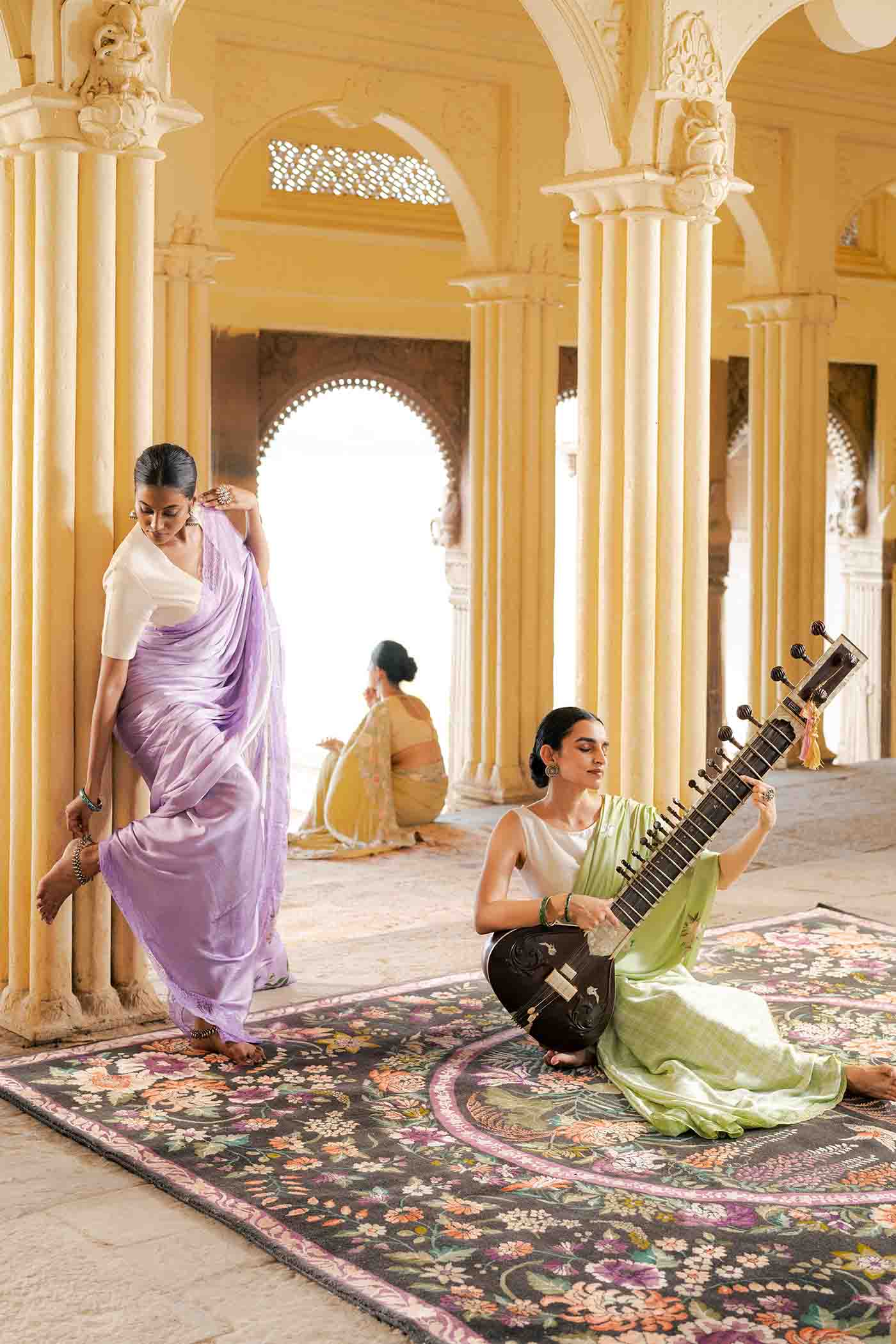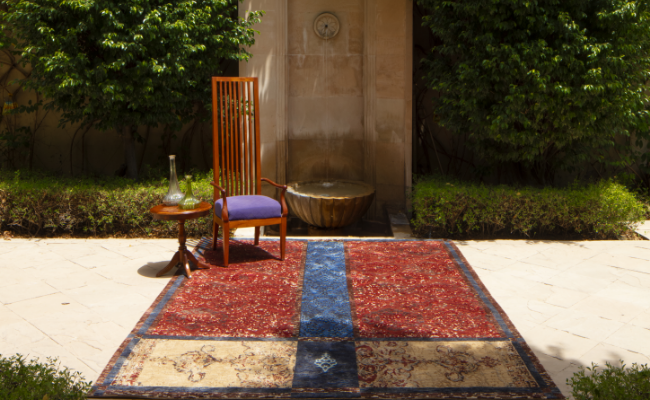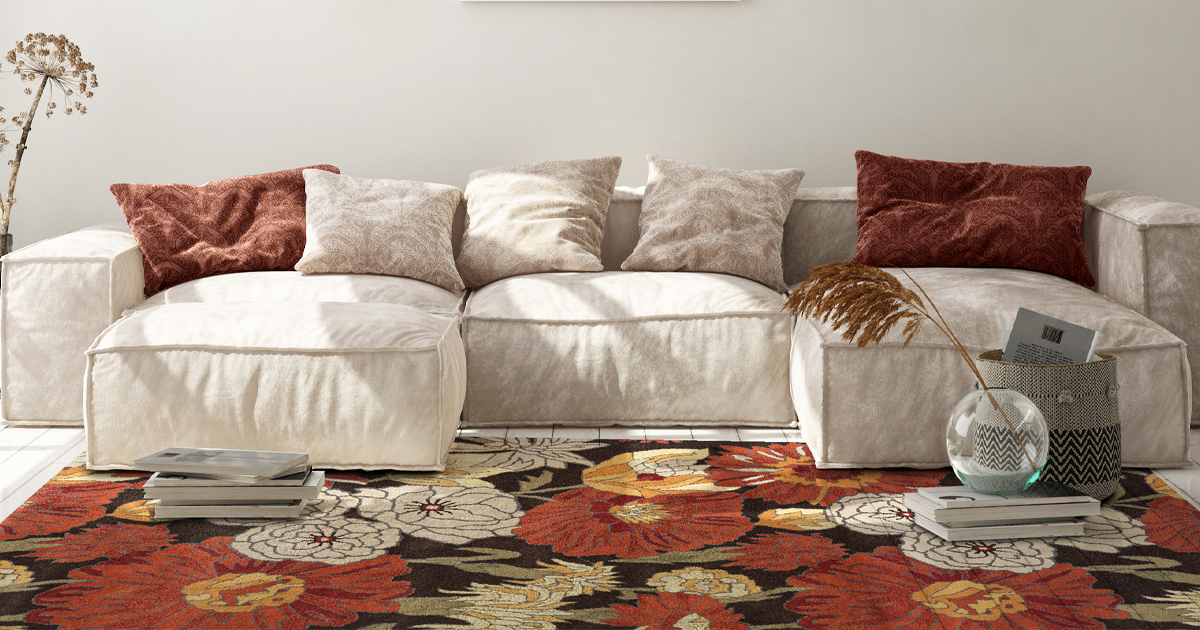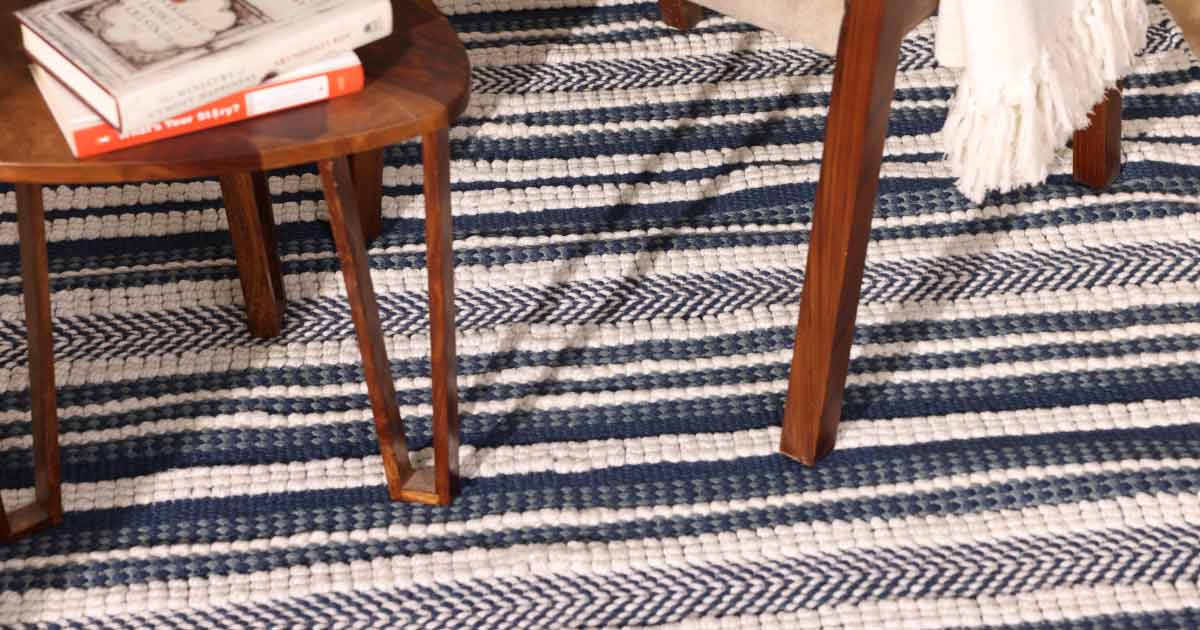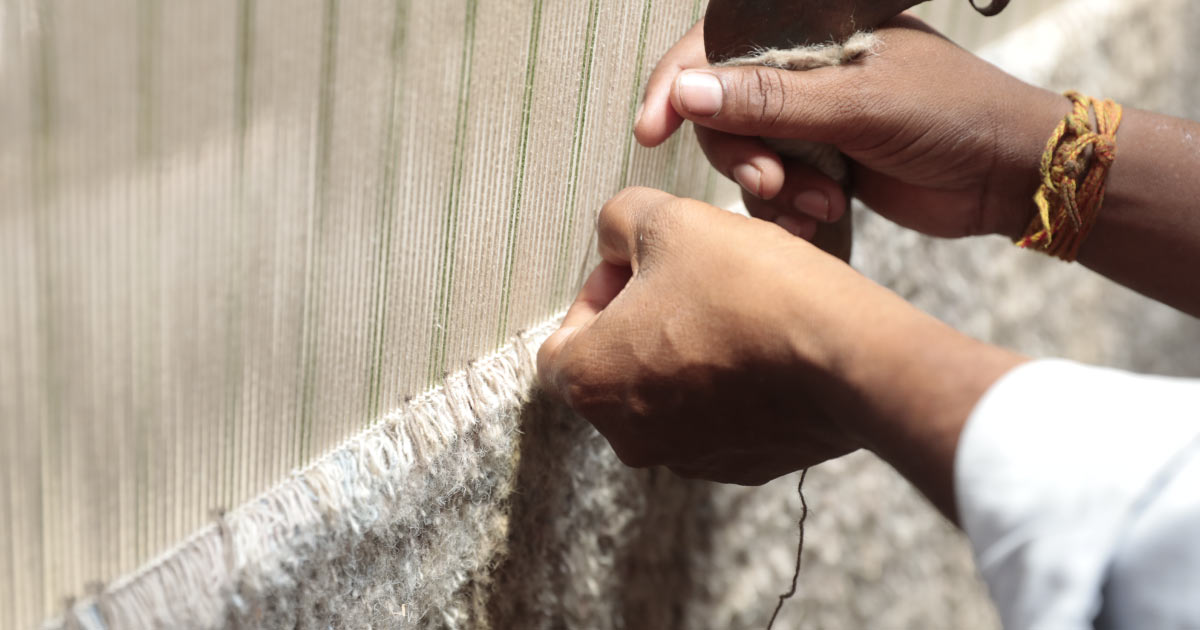
The Journey of a Handmade Carpet - Obeetee's Rug Making
With a plethora of rug crafters in the home and design industry, there are only a few brands that craft their carpets maintaining the synergy between design, quality, and craftsmanship. The constant shift in trends, the rapid increase in the value of home interiors and design, and the need to create more personalized spaces for better mental functioning are all the reasons that have made rugs an integral part of the home décor world. Rugs not only make a space look and feel more luxurious, but the furnishings are great for adding utilitarian value to your home.

To cater to a wider consumer base, brands in recent years, have shifted to faster craft processes such as using machines, synthetic dyes and materials, and digital printing techniques to craft their canvases. However, a downside to this is that these rugs may lack attention to detail and uniqueness in their designs. This is where handmade carpets become a great option for those who want a rug for their home that is at par with all these criteria.
Handmade carpets are a true reflection of the age-old tradition of weaving and are a rare combination of artistry and skill. It's fascinating how the delicate threads come together to create a magnificent piece of art, and its journey is nothing short of awe-inspiring. Let's take a closer look at Obeetee Carpets’ rug-making process and the steps involved in crafting a stunning carpet, so understand why handcrafted is great if you are looking for something premium.
Step 1: Designing the carpet
The first step in carpet making is the design which begins in Obeetee’s own CAD center, one of the largest in the industry. We also have smaller design centers in non-manufacturing locations like NCR and NY. We also have designers collaborating on special projects including leading fashion designers in India. The carpet designers at Obeetee use traditional motifs and patterns to create a stunning designs for the carpet. They work closely with the dyers to ensure that the colours work in sync with the design.
Step 2: Dyeing the yarn
Once the design is ready the dyeing of the required yarns is carried out in our dyeing plant which is again one of the largest under one roof with the capability of using different fiber types and numerous dyeing styles building in the capability of driving different aesthetics in the same product type. We are also proud to use environmentally friendly dyes and chemicals and have the capability of using natural dyes to meet the market demand. The material is hand-spun into yarn, which is then dyed using natural dyes. The process of dyeing the yarns is a skilled art as the dyers carefully select the colours and create intricate designs using different dyeing techniques.
Step 3: Weaving the carpet
Post dyeing the yarns required to be woven is issued to the weavers and through a stringent quality inspection on and off the loom the production is ensured to be completed on time and with correctness. The weavers at Obeetee are skilled artisans who have honed their craft from a young age. They use traditional handlooms to weave the carpets, and each knot is tied by hand. The weavers work tirelessly for weeks, or even months, to create a single carpet, paying attention to every detail and ensuring that each knot is perfect. The sound of the loom and the rhythm of the weavers' hands create a symphony that is truly mesmerizing. The social compliance cell at OBEETEE also ensures ethical work practices throughout its supply chain.
Step 4: Washing and finishing
Carpet washing is a big differentiator in determining the finish and the overall aesthetic of the product which is also carried out in-house. We are the first to introduce mechanized washing for some product types where we save as much as 90% water and reduce the process substantially to cater to the low delivery cycles. Some of the carpets are also singed using a blow torch to ensure a clean surface prior to washing. The carpets are then stretched and dried in the sun, which helps to set the colours and give them a beautiful sheen.
The finishing process involves trimming the edges, adding fringes, and adding protective backing to the carpet to give strength to the pile in some of the product categories. Shearing is a technique used to make the pile uniform and followed by sorting (wherever required) of neighboring colours to bring in the design clarity. We also use techniques like embroidery and hand carving.
Step 5: Inspection and quality control
The final step in the process is inspection and quality control. Each carpet is thoroughly inspected by a team of experts, who check for any imperfections and ensure that the rug meets the highest quality standards. The finished carpets are inspected for correctness as per the approved samples internally and offered for buyer inspection (as per the protocol) before they are vacuum cleaned, labelled, and bailed before dispatch. Only the carpets that pass the inspection are sent for packing and shipping.
In conclusion, the journey of a handmade carpet is a testament to the skill, patience, and dedication of the artisans who create them. Obeetee's rug-making process is a beautiful blend of traditional methods and modern technology, resulting in stunning and timeless carpets. The sound of the loom, the intricate designs, and the delicate touch of the weavers' hands make each carpet a work of art that is cherished for generations.
Find the best rugs online store and choose the best collection to decorate your house with style.


